The 15 Most Underrated Horror Films of the 1920s
Horror films of the 1920s were more twisted and strange than modern audiences can handle.

Horror has been a part of the human storytelling psyche for as long as humans have told stories, but the modern genre as we know it arrived on the back of World War One.
The first stirrings of the modern horror genre showed up during the late 1800s, but it was post-WWI that a true existential reckoning forced a new widespread fascination with the macabre. With millions… millions of human beings dead, the global community sought new forms of self-expression to make sense of the real-world horror they faced.
This coincided with the explosion of popularity in the new entertainment medium of film, and created an epic age of horror fiction that inspected humanity’s greatest fears and nightmares.
The 1920s were, by and large, still the era of silent films (though “talkies” were pushing in by the end of the decade in a massive way). Silent horror films, therefore, aren’t going to elicit quite the same movie-going experience that you’re used to if you enjoy modern horror and thriller experiences.
In a sense, these silent films are more participatory: they require you to focus on them and allow yourself to be immersed. That said, if you sink into them, they can be just as twisted and surprising as anything made today, and the early techniques found in these films can still startle and unsettle in surprising ways.
They are also fascinating from a historical standpoint. As we face our own modern horrors, with mass death from plague and climate change, it can help to look at how our societies a few generations back coped with similar crisis and pain.
Horror is more than “shock value,” after all: horror is a way of understanding who we really are, and proving the deepest problems of the world around us at the same time.
The Netflix age

Once upon a time, Netflix’s DVD library hosted well over 100,000 titles and sent out roughly 12 million DVDs per week. Now, with the advent of easy-to-use streaming services, the amount of content viewers have available has shrunk to the low thousands.
Look up any list of “films to watch” and you’ll find a tiny selection of movies, usually curated by people all reading the same lists and commenting on the exact same hot new show or film.
But, is that all there is? With over a hundred years of incredible filmmaking on the planet, isn’t there something missed when we only pay attention to the latest and greatest films? This series is dedicated to answering that question and to exploring a small handful of the unsung films from decades past.

I’ll examine each decade in turn, all the way back to the earliest days of film, and I’ll be exploring every genre of film there is! From science fiction, to drama, to romance, to comedy — I’m going to cover the entirety of film history for you, bringing out the golden nuggets for you to enjoy.
As always, with these articles, I love hearing your feedback in the comments section, or on Twitter @indubitablyodin. Let me know what your favorite films of the decade were, which ones you think I should have included, and which you hope I’ll mention in one of my next decades!
The Hands of Orlac (1924)

Director : Robert Wiene
Actors: Conrad Veidt, Alexandra Sorina, and Fritz Kortner
A renowned pianist suffers a horrible accident that takes his hands, but he receives transplanted hands… hands that once belonged to a murderer.
The Hands of Orlac (1924) came after the success of director Robert Wiene with the earlier Cabinet of Dr. Caligari. Received well due to its excellent photography, sharp ensemble performances, and sets, the film was considered a highly disturbing example of German expressionist cinema of the era.
The Cabinet of Dr. Caligari (1920)

Director: Robert Wiene
Actors: Werner Krauss, Conrad Veidt
An insane hypnotist manipulates a somnambulist (a sleep walker) into committing murders.
The Cabinet of Dr. Caligari (1920) was written by Hans Janowitz and Carl Mayer, both pacifists, and was inspired by their experiences with the military during World War I.
Dr. Jekyll and Mr. Hyde (1920)
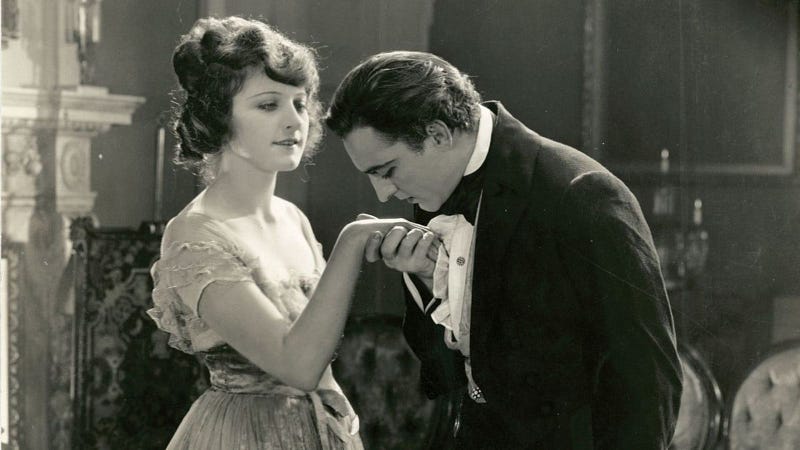
Director: John S. Robertson
Actors: John Barrymore
A doctor’s experiments in separating the dual personalities he thinks define all humans, sin and lust, good and evil, go terribly wrong when his darker urges turn him into a monster.
Dr. Jekyll and Mr. Hyde (1920) took a new approach (at the time) to the portrayal of this classic Robert Louis Stevenson story, highlighting a contrast between beatific good and monstrous evil. It also focused on the slow progression evil takes toward its worst forms. For modern audiences, there will likely not be much that is highly horrific here, and yet… there is such violence in John Barrymore’s portrayal of the transformation that even jaded moviegoers might find themselves surprised and alarmed.
Faust — Eine deutsche Volkssage (1926)
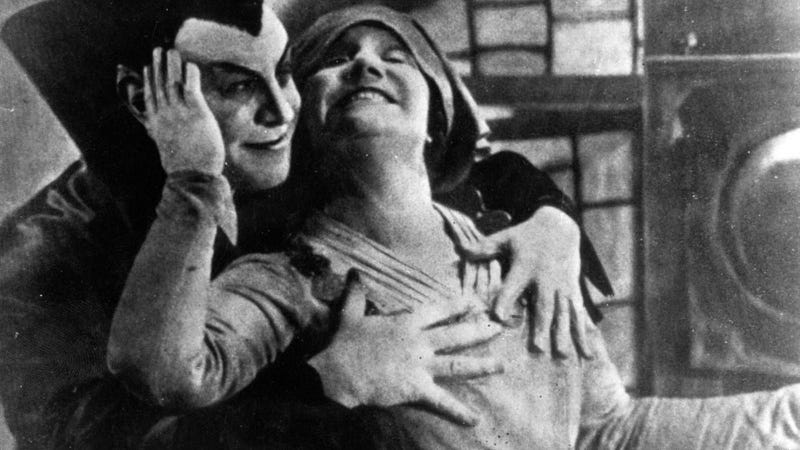
Director: F. W. Murnau
Actors: Gösta Ekman, Emil Jannings, Camilla Horn
Mephisto, a conniving and insidious demon, makes a bet with an Archangel that he can corrupt the soul of even the most righteous man. Should he succeed, the Devil would win dominion over the Earth once and for all.
Faust (1926) has been called one of the greatest films of all time, and “one of the most astonishing visual experiences the silent cinema has to offer.” For good reason. _Faust_ transports the viewer into a space of reflection, where reality is explored through the unreality on the screen. It’s one of the best examples of German Expressionist film, and a definite must-see for fans of early horror.
London After Midnight (1927)
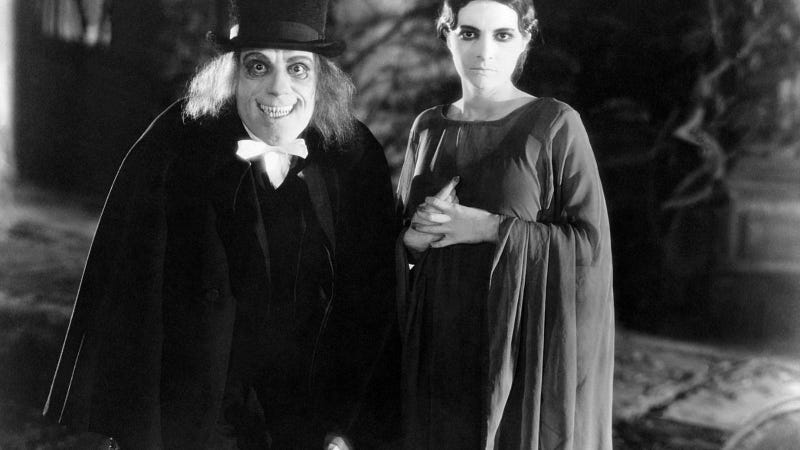
Director: Tod Browning
Actors: Lon Chaney, Marceline Day
A wealthy man commits suicide and five years later his home is taken over by strange, ghoulish apparitions.
London After Midnight (1927) honestly hurts me… because it’s a lost film. Thinking about all the amazing films lost in the #7 warehouse fire in the 1960s is just about sad enough to break my heart. A recreation of this film was made, using nothing but original stills from the production, in conjunction with the script. That runs about 40 minutes and provides a haunting glimpse at what was likely one of the best horror films of the 1920s.

Destiny (1921)
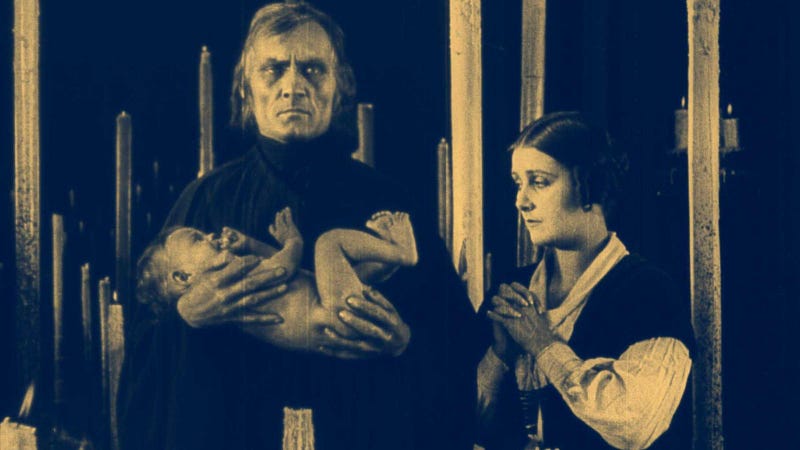
Director: Fritz Lang
Actors: Lil Dagover, Walter Janssen
A woman desperate to reunite with her dead lover turns to death Himself to seek the resurrection of her love, but must face three trials: she must prevent three romantic tragedies in history if she wishes to save her man.
Destiny (1921) is a real gem from the era, and Fritz Lang is up to his legendary self as director. It features haunting cinematography and sets, with special effects that seamlessly build up the dark magic of the plot. One of the boldest early horror films, and one that connects directly to real-world pain following WWI.
The Monster (1925)

Director: Roland West
Actors: Lon Chaney and Johnny Arthur
Dr. Ziska devises an elaborate scheme to trap human specimens for his bizarre resurrection experiments.
The Monster (1925) is an early horror-comedy film that definitely needs to be seen by any fans of the genre. It’s not one of Lon Chaney’s best performances, mostly because his role is small, but this regardless remains one of the most fascinating early horror films.
Alraune (1928)
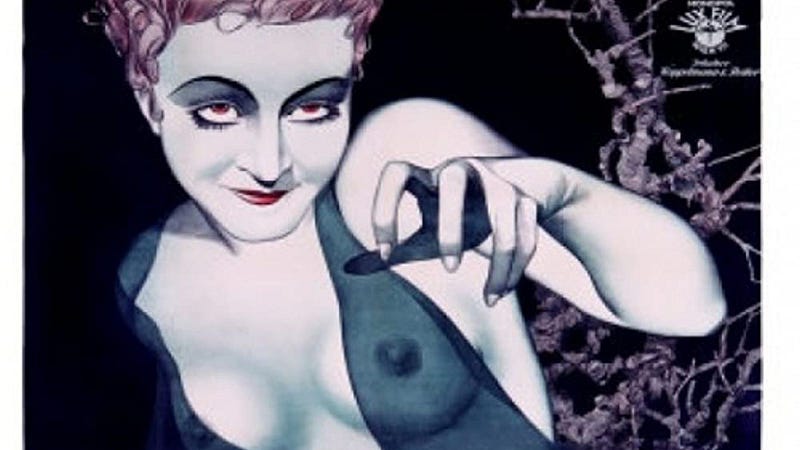
Director: Henrik Galeen
Actress: Brigitte Helm
A prostitute is artificially inseminated with the semen of a hanged man. Her unholy progeny, a girl, grows older at an impossible pace, and soon she begins to wreak mayhem with the men she encounters.
Alraune (1928) blends science fiction, folklore, and horror, in what might be considered the earliest film precursor to more modern fare of similar vein, such as Species. Despite its shocking plot, however, the film relies on subtlety, expression, and a good camera eye to create its nuanced erotic horror.
The Phantom Carriage (1921)
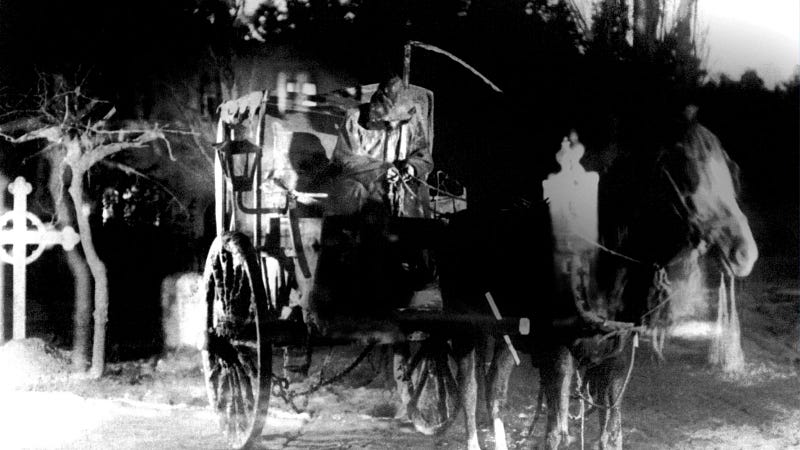
Director: Victor Sjöström
Actors: Victor Sjöström, Hilda Borgström
Based on the 1912 novel, Thy Soul Shall Bear Witness! (Körkarlen) by Swedish author Selma Lagerlöf, this is the tale of a drunkard compelled by a Death’s own carriage driver to reflect on his worst mistakes at the turning of the year.
The Phantom Carriage (1921) is one of the most impressive films of the era due to its complex flashback-within-flashback construction, keen special effects, and the impact it would have on the great director Ingmar Bergamn later on. It blends genre, straddling fantasy and horror, but horror of a deeply cerebral and moralistic type.
The Phantom of the Opera (1925)
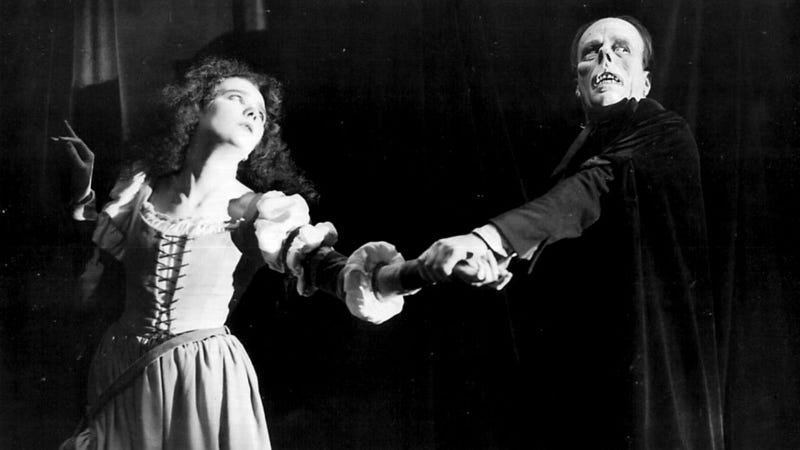
Director: Rupert Julian
Actors: Lon Chaney, Mary Philbin
A young opera singer becomes of the object of desire for a masked madman, who lives beneath the opera house and is intent on making her a star at any cost.
The Phantom of the Opera (1925) is good dramatic horror — we all know the tale. But this version of it is unique for more than just its silent component. Chaney in the role of the Phantom is truly grotesque, pitiable, and horrifying in turn.
Häxan: Witchcraft through the Ages (1922)
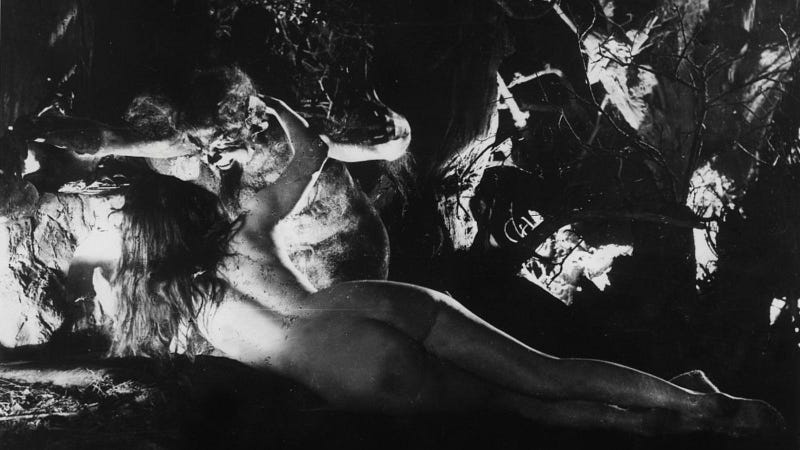
Director: Benjamin Christensen
A documentary-style precursor to modern “found footage” films, the film is a fictional and fantastical re-imagining of the history and superstitions of witchcraft in Europe.
Häxan: Witchcraft through the Ages (1922) is honestly disturbing in all the best ways, and I liken it to some of the best modern horror in terms of its ability to inspire fascination… and even a sense of dread. The costuming and special effects used here are put to superb use, and it has some of the most haunting horror imagery around in some of its scenes.
Nosferatu (1922)

Director: F. W. Murnau
Actors: Max Schreck, Greta Schröder, Gustav von Wangenheim
This one did the rounds on Tumblr for most of 2022 because the original novel was doing the rounds, as a chapter-by-chapter daily read. In the film, a vampire, Count Orlok, wishes to move to the modern landscape of the German metropolis and enlists an estate agent to procure him a new home. But it is the agent’s wife that Orlok soon begins to covet the most.
Nosferatu (1922) is, essentially, just Dracula. Indeed, all copies were ordered to be destroyed after a court ruled in Bram Stoker’s estate’s favor. Luckily, some survived, and it is now considered one of the great masterpieces of cinema. Still, because it’s a silent film, too few people have entertained the thought of watching it. A pity, considering how darned creepy it is, and how masterful overall. You just need a copy with a good score.

The Golem: How He Came into the World (1920)
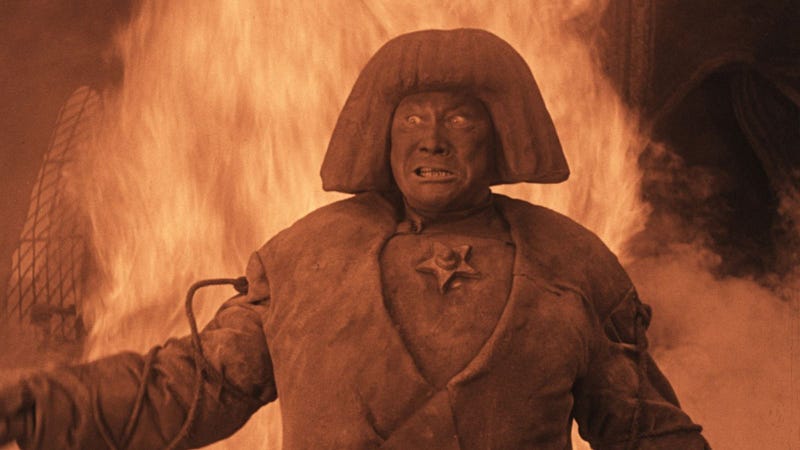
Directors: Paul Wegener, Carl Boese
In 16th century Prague, a rabbi foretells disaster through an alignment of the stars. Determined to protect the city’s Jews, he builds a creature out of clay and animates it with a spirit. But, while the creature is calm and gentle at first, the spirit within proves to have darker intentions for the world.
The Golem: How He Came into the World (1920) is a remake of a 1915 film by the same director. Wegener wanted to better capture the full story he himself had heard while visiting Prague, and this masterpiece was the final result. Incidentally, it is the only surviving copy of Wegener’s three films featuring the golem character.
The Cat and the Canary (1927)
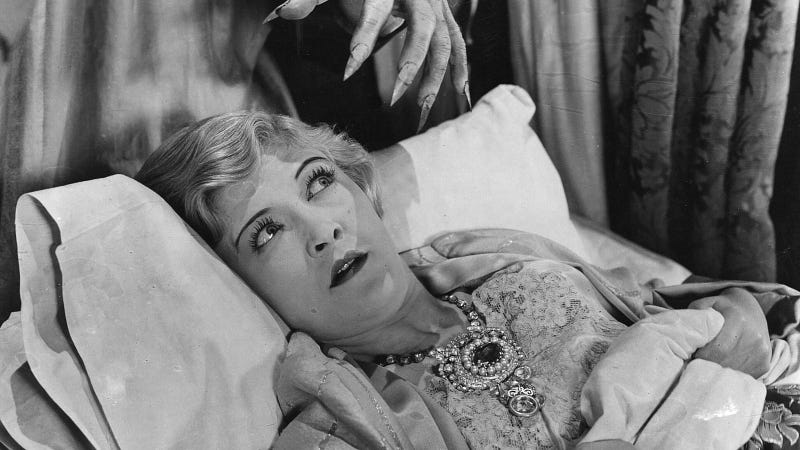
Director: Paul Leni
Actors: Laura La Plante, Forrest Stanley
Relatives of a wealthy man gather at his estate to hear his last will. Annabelle West is named heir, as long as a doctor declares her sane, but things begin to get dark when the lawyer is killed and Annabelle finds herself fearing for her life.
The Cat and the Canary (1927) is an early horror comedy, drawing inspiration from Broadway plays of the same era. Pulling together humor and Expressionism made for a vibrant and unforgettable film.
Wolf Blood (1925)
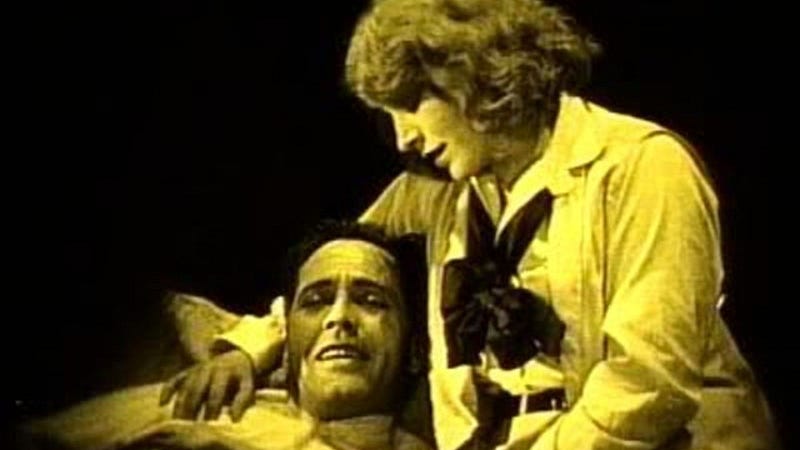
Director: George Chesebro
Actors: George Chesebro, Roy Watson, Marguerite Clayton
When a bitter rivalry between logging companies leaves a young man severely wounded, a transfusion of wolf’s blood leaves him with nightmares that may be manifesting in the real world.
Wolf Blood (1925) is something of a romance rather than what we might now consider horror. However, it is the earliest surviving werewolf film, with a previous 1913 film entitled The Werewolf being considered lost.

